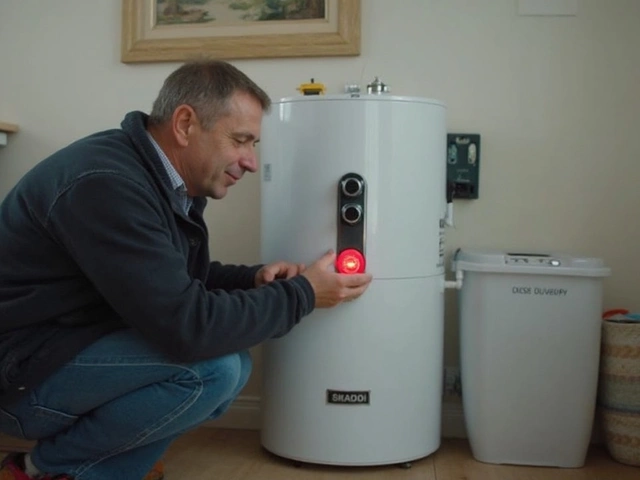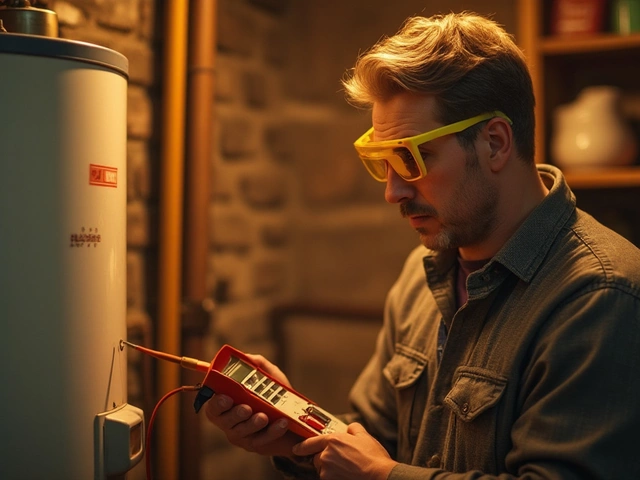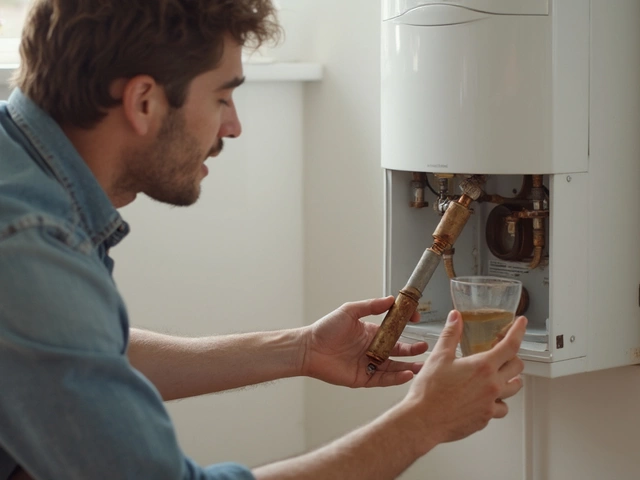Picture this: you step into the shower expecting a burst of warmth and instead get ice-cold water splashing down your back. That sinking feeling isn’t just about the cold—suddenly losing hot water can mean anything from a simple fix to a major repair nightmare. Hot water heaters are one of those things in your home you almost forget exist—until they stop working. But why do they sometimes just quit out of nowhere? And what can you actually do about it? Let’s get under the hood (well, the tank) and shed some light on the most common causes, real-life fixes, and insider tricks to keep your hot showers rolling.
The Usual Suspects: Why Water Heaters Fail Out of Nowhere
Hot water heaters aren’t mysterious machines. Under the shell, they’re a blend of basic electric or gas-powered parts that wear out or get knocked out of sync. Top on the list: blown heating elements (for electric heaters), tripped circuit breakers, faulty thermocouples (for gas types), sediment build-up, or even just a shutoff valve that got nudged when moving stuff in the garage. According to a 2024 Consumer Reports survey, about 38% of water heater failures happen without warning, often because small issues escape notice until the whole system quits.
Most water heaters have a 10-15 year lifespan. But they can die younger if you have hard water—minerals build up faster, hurting the heating efficiency and clogging parts. A University of Minnesota study found that heaters in areas with high mineral content needed repairs nearly twice as often. Electric water heaters often stop if a heating element burns out. For gas tanks, the pilot light and thermocouple are classic culprits. A failed thermocouple won’t sense the flame—and shuts off the gas, so no heat, no hot water. Sometimes, even a power surge or a lightning strike can fry critical circuits, especially for newer "smart" heaters.
Don’t forget the basics: Are you seeing water pooling at the base? Leaks can signal tank corrosion. No noises during heating? That's not normal—a loud popping or rumbling often means sediment is lining the bottom, insulating the water from the element and making it work way harder. And sometimes you just run out of hot water because your tank is undersized for your family—too many showers, laundry, and dishes back-to-back will do it.
Common Red Flags: Quick Clues Your Hot Water Heater Is Failing
Before you panic and call for a new tank installation, check out these telltale signs that can give you a quick clue to what’s wrong. Is the pilot light out on your gas heater? That’s usually obvious—a little window on the tank will show you if the blue flame is burning. If it won’t stay lit, the thermocouple could be toast, or you might have a gas flow issue. For electric tanks, a relief valve that’s dripping may mean the internal pressure is too high, but it could also point to a busted thermostat keeping the heater on for too long.
If your water comes out rusty or has a metallic taste, this is a red flag for corrosion inside the tank. Worse, leaks will soon follow, and then you can’t really patch the tank—it’s replacement time. Bad odors or weirdly colored water usually means bacteria or sediment have found a home in the tank, especially if you’ve been away for a bit and the water has sat stagnant.
Lukewarm water is another classic clue. Check if the breaker’s tripped (for electric types) or if the temperature setting has gotten bumped (kids love spinning those dials). For gas heaters, sometimes a gust of wind can just blow out the pilot. Older tanks can develop “dead zones” where parts of the heating element burn out but don’t trigger the thermostat to shut off completely, leading to hit-or-miss hot water.
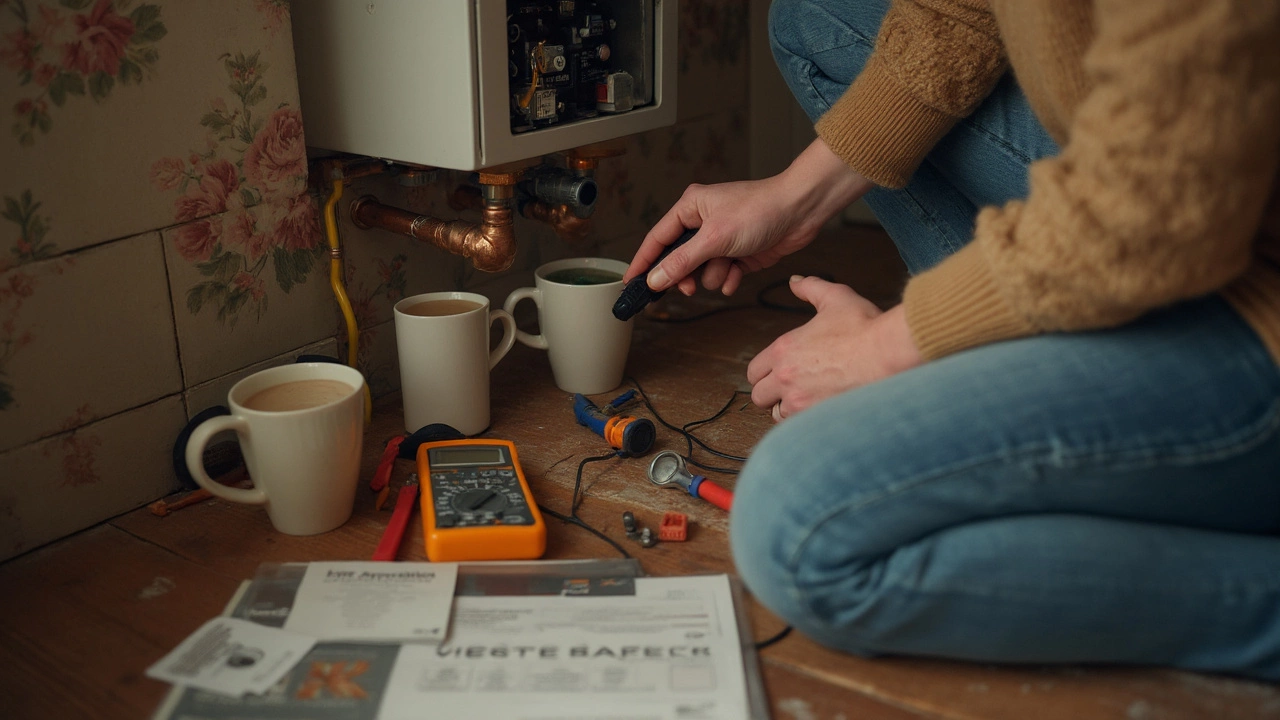
Quick DIY Checks and Fixes Every Homeowner Can Try
Don’t reach for the phone right away. Some problems really are simple enough to handle—you don’t need to be a plumber. Start with power: is the circuit breaker tripped? Flip it back on and listen for the heater to kick in (some tanks are nearly silent, so check the water temperature after 10 minutes). For gas models, open the access hatch and see if you can relight the pilot (usually there are instructions pasted right on the tank). Newer heaters usually have a button for this; older models might need a long lighter.
If the pilot won’t stay lit, try cleaning the thermocouple gently with fine sandpaper (dust or soot can block the sensor). Be sure you’re getting gas—the “sniff test” for leaks is real, but if you smell gas, stop and call a pro. For tanks that are slow to heat, flush out sediment by attaching a garden hose to the drain valve and letting water run out until it’s clear. Not only does this improve efficiency, but it can also stop strange noises and extend the life of the heater.
If your tank seems to shut off after a few minutes or keeps “short cycling,” it might be an issue with the thermostat—a replacement part costs about $20 and swapping it takes a screwdriver and 20 minutes if you’re handy. Heating elements on electric models can also be replaced, but make sure the power is off! If you spot water around the base, trace it to see if it’s coming from a fitting or the tank itself. A leaky drain valve can sometimes be fixed just by tightening it; a leaking tank means it’s time to shop for a new heater.
Handy tip: Write down your model number and look up the manual online. You’ll find troubleshooting charts with causes and fixes specific to your unit. Here’s a simple troubleshooting checklist:
- hot water heater not working at all? Check breaker, pilot, gas.
- Hot water runs out too fast? Sediment, broken dip tube, or undersized tank.
- Discolored or smelly water? Flush the tank, check for corrosion.
- Popping, rumbling, or hissing? Sediment buildup—drain the tank.
- Leaks? Find the exact source—tank leaks mean replacement.
When Repairs Aren’t Worth It: Time to Replace Your Water Heater?
Sometimes, it’s just not worth sinking money into another repair. According to the National Association of Home Builders, the expected lifespan of a tank-style water heater is about 11 years. If yours is pushing that age and failing frequently, it makes more sense to replace. Here’s a quick breakdown of when to skip repairs:
- The tank itself is leaking or badly rusted inside.
- You’ve already replaced the thermostat or heating elements within the last year.
- Repairs cost more than 50% of what a new tank would cost.
- Hot water demand has grown (like a new baby or extra people in the home) and the old tank can’t keep up.
Modern water heaters are a lot more energy-efficient than even models from 10 years ago. New codes require better insulation, and some “hybrid” heaters cut costs with heat pump tech. According to the U.S. Department of Energy, newer efficient models can save a family of four up to $350 a year compared to an old unit. Switching to a tankless heater can help if you’re sick of cold showers during busy mornings, though installation costs more upfront.
If you do go shopping, know your requirements: size, energy source, and space available. Check for rebates—many states offer them for high-efficiency units. And always factor in installation. A straightforward replacement by a pro usually takes two hours, but rerouting gas or electric lines will add time and cost.
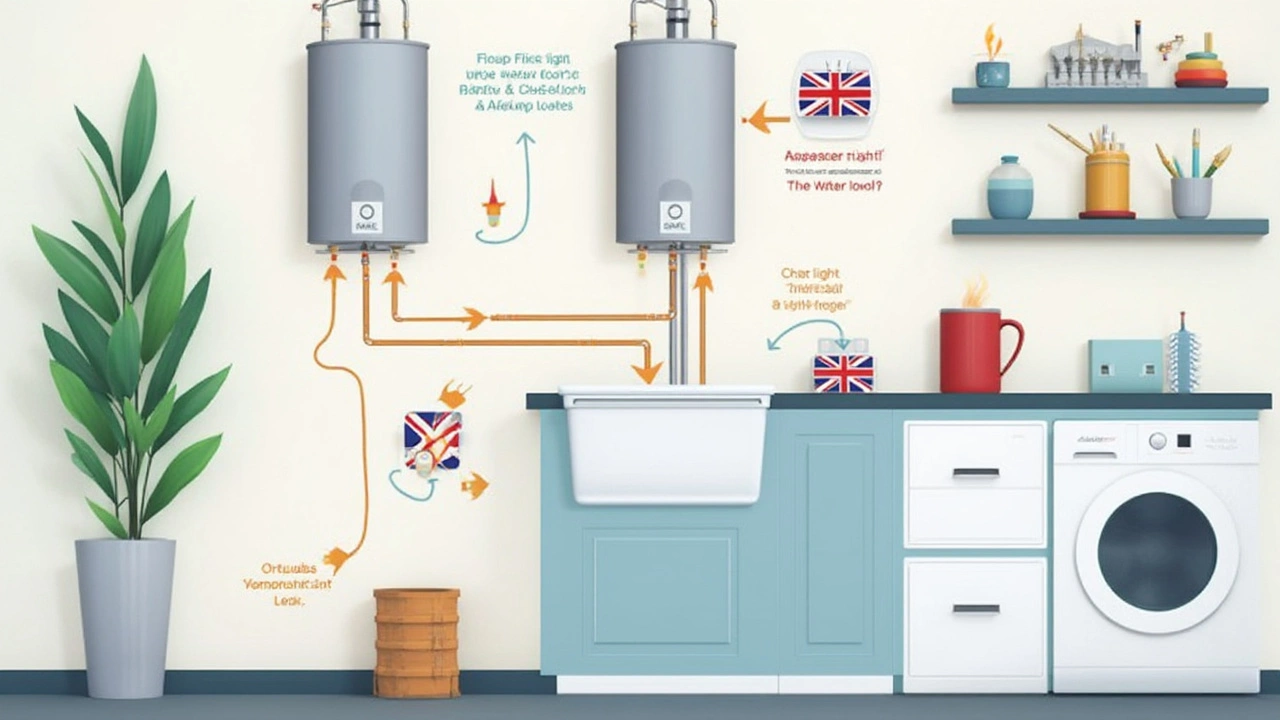
Long-Term Tips to Keep Your Water Heater Running Smoothly
Once you’ve fixed the problem—or put in a shiny new tank—the best move is regular maintenance. A few easy routines can seriously extend the life of your heater and make surprise failures way less likely. The most important? Flushing the tank every six months. This simple habit removes mineral sediment before it piles up and burns out your heating element or insulates the tank bottom.
Every year, check the anode rod—it’s a long piece of metal that attracts minerals and corrosion instead of letting them attack the tank itself. If the rod is mostly eaten away when you pull it out (usually with a socket wrench), replace it. This step alone can double your heater’s lifespan in hard water areas. Also, test the pressure relief valve by lifting up on the lever; a rush of hot water should spurt out, then stop when you let go. If nothing happens or the valve won’t close, swap it for a new one.
You can fight hard water with a whole-house water softener. Not only does it help your water heater, but it’ll protect pipes, faucets, and even your dishwasher. Set the thermostat to 120°F for safety and energy savings—hot enough to kill bacteria, but not high enough to risk scalding. If you have a vacation planned, switch the heater to “vacation” mode or the lowest setting to save energy and prevent bacteria buildup.
| Common Problem | Typical Fix | Cost (USD) | DIY Difficulty |
|---|---|---|---|
| No Hot Water (Electric) | Replace heating element or reset breaker | 20-50 | Medium |
| No Hot Water (Gas) | Relight pilot, replace thermocouple | 10-30 | Low |
| Leaking Tank | Tank replacement | 500-1,200 | Pro needed |
| Discolored Water | Flush tank, replace anode rod | 20-80 | Medium |
| Short Cycling | Replace thermostat | 20 | Low |
Remember, the biggest killers of hot water heaters are neglect and hard water. With a little attention twice a year, most tanks will run well past their warranty. Pay attention to new noises, leaks, or color changes in your water—that’s the heater crying for help. Catch the signs early, and you’ll keep your showers steamy and your bills low for years to come.


